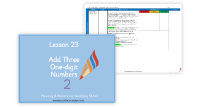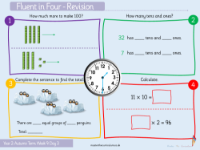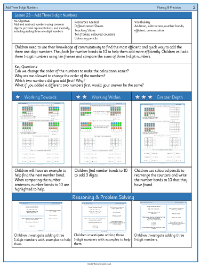Addition and subtraction - Add three one-digit numbers - Presentation

Maths Resource Description
In a mathematics lesson centred around addition and subtraction, students are tasked with adding three one-digit numbers. The lesson encourages the use of known facts and explores the concept of commutativity, which allows for the numbers to be added in any order without changing the result. To aid understanding, ten frames and counters are used to visually represent and add numbers such as 4, 3, and 6. Students are prompted to consider the order of addition, aiming to find number bonds to 10 for ease of calculation, thereby demonstrating that 4 plus 6 equals 10, and when adding 3, the total is 13. This methodical approach is designed to enhance fluency in addition while also developing reasoning skills.
Further activities involve calculating the totals of rows and columns with different sets of one-digit numbers, prompting students to think about whether changing the order of numbers can simplify the calculation. For example, when presented with the numbers 5, 4, and 2, students are encouraged to find combinations that make the process easier. The lesson progresses to comparing number sentences using greater than, less than, or equal to signs, reinforcing the commutative property of addition. Additional reasoning tasks challenge students to consider patterns when adding consecutive one-digit numbers and to articulate their understanding of odd and even number combinations. The lesson concludes with independent work where students apply their knowledge to various problems, ensuring a comprehensive grasp of the concepts taught.



